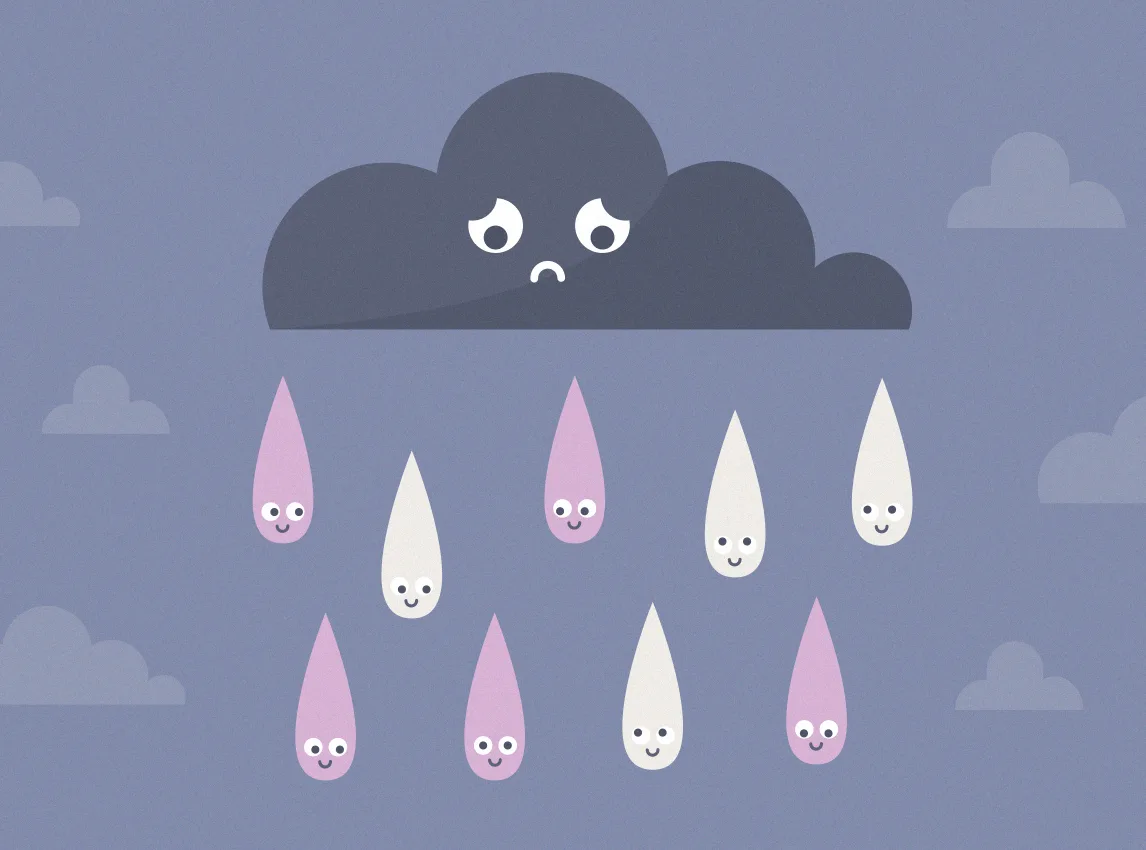Is holding back your tears holding you back?
I remember as a kid watching an episode of “Sesame Street” and hearing a doo-wop song called “It’s Alright to Cry”. A Roy Orbison-esque voice crooned about how when you’re sad, tears are OK. Necessary, even.
“Bunch of wet blankets,” I remember thinking. Clearly, I was a pretty hardened 6-year-old. Or maybe I had just been conditioned to think that crying was a sign of weakness. I’m English, after all, with an Irish family. My ancestral response to difficult emotions is: get drunk, write groundbreaking novels, have fights, invade other countries, and react to spilt milk by sucking it up through a stiff upper lip. Resisting difficult emotions is fairly universal, though. Many cultures have a low tolerance for displays of sensitivity; these days there’s even concern we may be losing our ability to empathize. Now, more than ever in our fast-paced world, feelings seem inconvenient. Particularly the more difficult ones: anger and sadness. We’re often told from a young age that we should only express them when absolutely necessary, in a clipped and brisk fashion. But emotions are as much physical as they are psychological. And even though they hold a crucial evolutionary purpose, the physical manifestations of anger and sadness are often overlooked. Crying, shaking, increased heart rate, globus pharyngis (that terrible ‘lump in the throat’)—they aren’t there to inconvenience us. Instead, they’re triggered by our brain’s limbic system—what performance physiologist Nick Knight, Ph.D., calls “the emotional headquarters” which regulates our behavior, forming a vital bridge between our physical and psychological selves.
The physical manifestations of anger and sadness prepare our bodies for action during difficult moments by increasing blood flow, releasing extra stores of energy, and tensing our muscles. When you’re angry, your heart rate increases, affecting your breathing, while your autonomic nervous system floods your body with adrenaline and cortisol. It’s a primitive biological reflex preparing you for “fight or flight,” which is why when you’re absolutely furious it’s probably better to go for a run than fold laundry. Crying, on the other hand, is what Knight calls our “physical S.O.S. call for emotional support”. There are three different types of tears: basal, reflex, and psychic. Psychic tears flow uncontrollably when we’re emotionally overwhelmed. They contain corticotropin, a hormone that regulates stress levels, and leucine enkephalin, a natural analgesic (or painkiller, for those of us who haven’t been to medical school.) So tears help calm us down while we respond to a situation stimulating an emotional response. “During this process,” Knight warns, “your cognition is affected with poorer concentration and impaired decision making.” This means ignoring or suppressing sadness in the name of rationality isn’t actually that rational.
“Anger and sadness are primitive survival reflexes,” Knight continues. “Emotions motivate action, allowing us to physically respond in the short term, and adapt, grow, and develop in the long term.” Therefore, when our emotions are stifled or left unattended, they can start eating away at our mental and physical wellbeing. “If we leave sadness to brew, it can evolve into persistent low mood, lack of pleasure in life, and low energy levels—the three cornerstones to diagnosing depression,” Knight says. “While letting anger build up is likely to heighten stress levels. It can also spill out at inappropriate times, with potentially negative outcomes.” So the inhabitants of “Sesame Street” were right, as usual. My cynical 6-year-old self-assumed that letting emotions fully run their course was just psychobabble balderdash. But it seems that a strict diet of stoicism is actually just junk food for the mind. So you can add “don’t fight back the tears” and “don’t bite your tongue” to your self-care menu. It’s OK to not feel OK sometimes. In fact, it’s vital.

It’s OK to not feel OK sometimes. In fact, it’s vital.
Ned Kelly


Be kind to your mind
- Access the full library of 500+ meditations on everything from stress, to resilience, to compassion
- Put your mind to bed with sleep sounds, music, and wind-down exercises
- Make mindfulness a part of your daily routine with tension-releasing workouts, relaxing yoga, Focus music playlists, and more
Meditation and mindfulness for any mind, any mood, any goal

Stay in the loop
Be the first to get updates on our latest content, special offers, and new features.
By signing up, you’re agreeing to receive marketing emails from Headspace. You can unsubscribe at any time. For more details, check out our Privacy Policy.
- © 2025 Headspace Inc.
- Terms & conditions
- Privacy policy
- Consumer Health Data
- Your privacy choices
- CA Privacy Notice
